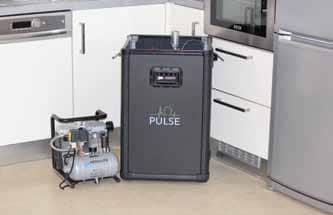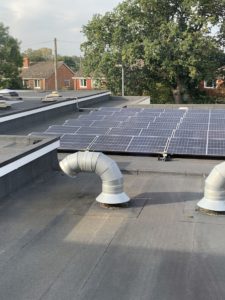2020 brings with it plentiful change on the horizon, not least when it comes to energy usage. Could Air Leakage Testing be one of those concepts facing a new twist?
Air Leakage Testing – sometimes referred to as Air Tightness Testing or Air Pressure Testing – measures the total air lost due to gaps and leaps in the fabric of a building.
It’s a crucial marker of a development, as air leakage can be responsible for:
- Unwanted heat loss
- An uncomfortable living environment
- Higher heating bills
- Greater CO2 emissions
It’s been a prominent feature of Building Regulations in England and Wales since 2006, and is a factor that can’t be ignored.
But, could Pulse Testing take the place of the current air leakage test procedure?
What is Pulse Testing?
Pulse Testing is a fairly new method, but it’s one that has the conversation building around it.
With Pulse Testing, a box the size of a speaker is placed in the centre of a dwelling and is used to send out a pressure shockwave. It collects information from this pulse, using it to calculate the air tightness score without having to use a door fan.
It’s a concept that was originally pioneered by the University of Nottingham, but traction is growing.
How does this compare to current air leakage testing methods?
In theory, Pulse Testing is quicker, simpler and has a lower impact.
Unlike a blower door fan test – which creates a pressure differential across the building fabric of 50 pascals – Pulse Testing dynamically measures building air leakage at a much lower pressure differential of 4Pa. This is much more representative of ‘real world’ conditions.
It would require less equipment to be carried around by the air test engineer and could be completed in far less time – approximately 10 minutes in total depending on the compressor used.
It can even be carried out with occupants still in the building, and windows and doors may not even need to be opened. This means disruption is minimal, which could be a major bonus.
It is easy to use – just the press of a button – and doesn’t impact the building fabric or force leakage paths.
Sounds great, right?
There are disadvantages of Pulse Testing.
You might be thinking, “why on earth aren’t we already using this?”
Pulse Testing is yet to be recognised by building regulations, and so at this point any tests completed using this method won’t line up with Building Control.
As a more recent development, the results from measuring very airtight dwellings are not currently reliable or up to scratch.
Further research recently undertaken in conjunction with Nottingham University on Passivhaus builds has proven the ability of Pulse in very airtight buildings. The results and findings from these numerous field trials have been presented to
Plus, Pulse Testing stops the air test engineer from looking around the building during the test to pinpoint certain issues. However, the tester can still make a visual inspection of the building and identify any issues whilst the Pulse unit is being charged by the compressor (approximately 10 min).
So, is the pulse air tightness test the future?
It’s difficult to predict – with the upcoming changes to the Future Homes Standard and SAP methodology, change and development is definitely up for grabs. The CIBSE TM23 Testing Buildings for Air Leakage Consultation document address both approaches in detail and is a fantastic place to dig a bit deeper on the different options.
Pulse is not intended as a replacement for the current blower door test, it is meant as an alternative methodology that may be more suitable/appropriate in some situations.
It’s an exciting time for the industry – we’re excited to watch and see how this one develops.
Image reproduced with kind permission of Build Test Solutions





















